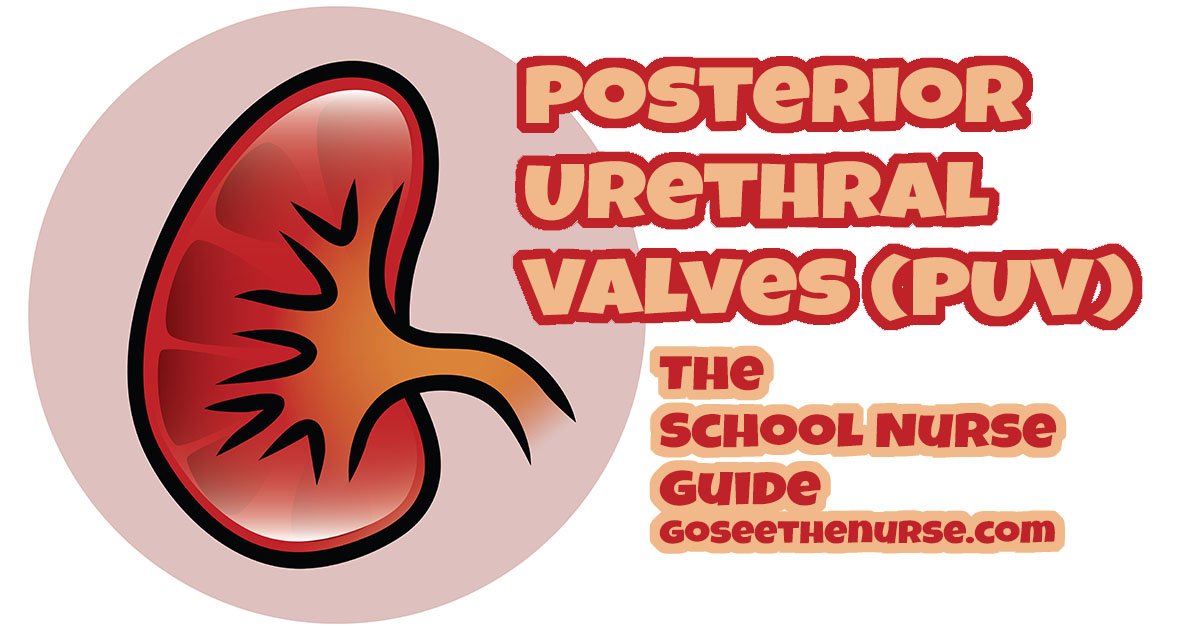
Tubes everywhere!
Remember…way back…(WAY WAY back for old nurses like me). Remember way back to your pre-nursing days and your A&P class? You know what I’m talking about. Those poor frogs…I’ll mention those poor critters at the end of this article. From the inner workings of our cells to the inner workings of each and every body system, we learned all about this and that. And, with all those systems, it’s amazing that stuff doesn’t go wrong more often with more folks. However, this “amazing” thought isn’t a thought that parents of children who have problems and the subsequent challenges to overcome. We find ourselves either asking ourselves one of two questions. Either, “How did I get so lucky?” Or, “Why me? Why my child?”
What are little boys made of, made of?
What are little boys made of, made of?
What are little boys made of?
“Snaps and snails, and puppy-dogs’ tails;
And that’s what little boys are made of.”
What are little girls made of, made of?
What are little girls made of?
“Sugar and spice, and all that’s nice;
And that’s what little girls are made of.”
— The Real Mother Goose (1916)
Posterior urethral valves are a problem in the urethra in boys. There are some hints of documentation of PUV occurring in girls. However, you will likely not ever see this issue in a girl. Is it genetic? Probably not, but they have seen twin boys born with this issue. The “why’s” will always be there. Basically, this condition is male-specific (though rare) and is usually identified while the child is still in the womb.
Let’s back up and look at anatomy.
The genitourinary system, or urogenital system is the organ system of the reproductive organs and the urinary system. We’re not concerned with the reproductive organs…well…we are, but not for this article.
The kidneys are one of the body’s washing machines (liver being the other). The blood runs through the kidneys and the kidney’s infrastructure. The stuff our body does not need is filtered out and urine is formed. The urine (Pee Pee) drips and drops down the ureters and into this large, muscular sac called the bladder. And thank goodness for the bladder; we’d just drip pee pee all day without this convenient holding tank. When the bladder fills to a certain point, cool stretch receptors “trigger” the brain and it starts releasing valves and notifying you that you need to go for a short bathroom break.

And, Sometimes Things Go Wrong
About 1 in 8,000 boys will develop PUV by “chance.” Is it genetic? They are not quite convinced yet. This may be one of those conditions that just “is what it is.” Some folks don’t like that saying, “it is what it is.” That saying indicates something happening that is outside of our control. And that’s why PUV is definitely an “it is what it is” condition.
Though this condition is called “valves,” they are not “normal” valves and are not suppose to form. It is a congenital condition. But, we school nurses aren’t usually involved with the child at the prenatal stage or most of the years between birth and five-years-old. By the time a child with PUV that ends up at your school they may very well need accommodations for some of the symptoms this condition may cause including both urinary frequency and new onset of urinary incontinence. I would even venture into musculoskeletal issues that may be identified. And how do we move from this being a genitourinary issue to a musculoskeletal issue? As a matter of fact, there may be a slew of other conditions that have occurred during the first 5-6 years of life that you will have to address as well. And all because of some little flaps and twists of tissue. Read on…
Secondary Vesicoureteral Reflux (VUR)
In college, we lived in a little house at the end of a lane where the toilet would, on an occasion, back up into the bathtub. Yes…it was just like you are imagining in your mind right now…just like that…gross… Roots from an aged tree had gotten into the underground pipes and would block the drainage to the city’s septic lines at the road. So, what was “flushed down” ended up “backing up.”
In Posterior Urethral Valves (PUV), the NOT-suppose-to-be-there valve that forms at the neck of the bladder is kinda like the roots from that old tree. The DOWN keeps flowing and when the flow is blocked downline, the input has to go somewhere…it usually goes back UP. In VUR caused by PUV (don’t you just love abbreviations?) the urine will back up (reflux) to (or through) one or both ureters and may end up backing up to and into the kidneys. VUR is a condition that is staged from 1 (mild) to 5 (severe). In a way, this is the main issue with PUV. It the level of “back up” that causes the problems and the subsequent damage.
PS: “Secondary” because the VUR is “caused” by the PUV.
End Stage Renal Disease (ESRD)
There are those children who end up developing end stage renal disease due to the effects of the urine pressing back during reflux into the kidney. One resource says that over 50% of children with PUV progress to ESRD within 10 years. If you are a nurse, you know the problems that ESRD causes.
These children will likely have Peritoneal dialysis (PD). We will not go into PD; this is a topic worthy of an article all on its own. It’s been my experience that the child usually does not go through any of the hookup, infusion,diffusion, and drainage process during the school day. They are usually “dry” when they are at school. However, PD exchanges can be done anywhere that is clean and dry.
The main consideration for children who come to school with a PD catheter is cleanliness of both the insertion site and the cap. Be sure to have an extra cap or two on hand (I suggest two…after all two is one and one is none). And having a bit of dressing supplies on hand in case the dressing at the abdomen gets gunky or falls off.
Treatments for Posterior Urethral Valves (PUV)
If you want the tub to drain, sometimes you have to pull the stopper. And, in PUV, that’s exactly what may have to be done. The two surgical procedures that will (rather should) correct PUV are Valve ablation and Vesicostomy (followed by Valve ablation).
When we nurses hear the term “ablation,” most of us think of Cardiac ablation as a procedure to help the heart’s electrical signals “fire” correctly (by scaring or destroying the cardiac tissue that is causing the “bad” electrical signals and messing up the lub-dub pattern of the heart).
Ablation – /əˈblāSHən/ – is the surgical removal of body tissue. So, in posterior urethral valve ablation procedure, these “bad” flaps of tissue are “freed” thereby allowing the urine to flow out. In very young kiddos (babies), they will first do a vesicostomy (an opening from the bladder to the outside of the body that bypasses the PUV) and later perform the ablation.
In doing the research for this article, I was dumbfounded at the problems this seemingly little abnormality can cause. You may even see problems that you’d never guess could be related to PUV. It caused me to really think about urine. What is it really?? How could this possibly affect the neuromuscular development?
Consider the color of our urine; the color changes sometimes depending on what we eat. My son used to love to eat beets; not because he was a big beet-eater but because he loved the color his pee pee would turn. Ever wondered why your urine turns dark when you take vitamins? Na! You know why. Some of the vitamins we didn’t need “spill” out of our bodies through our kidneys. Urine is normally 95% water with other “goodies” floating around in that water. Those “goodies” or waste products include substances like urea, chloride, sodium, potassium, creatinine and other dissolved ions, and inorganic and organic compounds. A lot of what is in the urine is what our body “needs” but not right at that moment. After all, potassium is NOT like money…more is not always better. But too little potassium ain’t good either…nope! Not at all.
When do the kidneys start making urine? Think about this for a bit… While we were “cooking in mama’s belly” we started making our very own pee pee at around the 11th or 12th week. Okay…where did that pee pee go? Well…it didn’t go anywhere. We little forming babies just swam around in that big bag of amniotic fluid…moving this way and that and eventually turning about to find ourselves upside down and ready to meet the world. As a matter of fact, urine is a major component of amniotic fluid . So, for about 28 or 29 weeks, we pee pee’d in our little amniotic cavity and our mamma contributed some fluids and we were in our little “world”…and were actually protected by that full amniotic sack and padded by all that amniotic fluid. It’s very important stuff.
PUV is often discovered during an ultrasound while we are still in mama’s belly. There will be this large “cavity” like area (where there’s not supposed to be a large cavity-like area within the child’s body) seen on the ultrasound indicating a “backup” of urine. With this “backup,” there’s a reduction in urine production to the supply of amniotic fluid to the amniotic sack. A reduced volume of amniotic fluid means less volume for the developing child to move about in. Within this reduced space, the child is not able to freely move about and therefore may end up developing musculoskeletal issues that will likely need accommodation during the school years to come…when we school nurses become involved in the child’s care.
As far as what we school nurses can do for these children…there’s not much we can do but support the child, support the family and help with deciding what accommodations needs to be made in order to promote learning. There may be other issues that will be either all-out secondary to the PUV or be remotely related to the PUV. And, with each of these issues we school nurses can help get these children through each school day and eventually thought the school year. Hopefully this article will be only an FYI for you; this condition is rare. But, as we school nurses cruise though our school nursing careers, we may just find a child in our care who has this condition. But, I hope not.
What about those poor frogs??
This is totally unrelated to the topic of this article…but I did mention it at the first of the article. When I was in A&P…back in the dark ages of the mid 1990’s, we had a dean that insisted on each and every A&P student visualizing the action of electrical impulses in nerves in the body. So, each lab class got a bucket of frogs. The instructor demonstrated the method of “humanely killing” the frog (a method I will not describe) and the process of stripping the skin from one of the legs of the frogs. She located the main nerve in the leg and connected an electrode to the nerve. The little leg of the dead frog kicked a bit when stimulated with regular old-fashion electricity. Yippie. All she had to do was tell us this would happen and I would have believed her…honestly. Then she said, “Okay, here are your frogs.”
This was an A&P class of mainly nursing students. Nurses usually have a bit of…what’s the word…oh yeah…COMPASSION for living things (human or otherwise). It’s in our nature; it’s one of the personality traits that makes us so awesome for this job. The class was full of girls except for one other male..35 of us in all. Yes. You guessed it. I had to kill 34 frogs that day and even after protesting and after a heated one-way conversation with an emotionally “cold” dean.
For you who may be offended by the “class was full of girls” comment and feel my meaning is that “girls aren’t emotionally capable of killing frogs like boys are capable.” That is 100% NOT true for all girls…but trust me…this WAS 100% true for this group. They were lined up at the sink (including the other fella) and I was the one with the scissors.
There. That’s all the complaining I am going to do today. However, remember I said that I had to kill 34 frogs…what happen to frog #35. Well, my university had a nice pond there on campus and just across from where the nursing students did return demonstrations. I just know little Bucky The Frog’s (his name I gave him) offspring are still hopping about and eating mosquitoes in those ponds…though it took a bit of time to get Bucky The Frog’s smell out of my backpack.
I hope you enjoyed this article. There’s more coming. Want to make sure you get the latest from your ol’ buddy Nurse Kevin? Sign up for the Go See The Nurse Newsletter (I won’t bug you; I promise).
Your information is kept private! Here’s my Privacy Statement.




